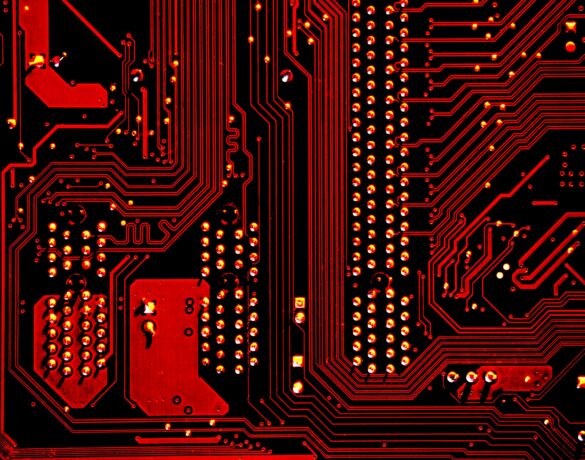If you’ve been dealing with hardware OEM’s, EoL is a term that you’re already familiar with. Simply put, it stipulates that any equipment post the EoL date is prone to a higher rate of failure, and so it needs to be replaced. After the EoL date, the equipment will have diminishing support from the manufacturers till the EoSL (End of Service Life), when they cease all action. This is, of course, completely under the mandate of the hardware OEM’s themselves.
So, the question here is what exactly is EoL and how does it affect your business?
What Is End-Of-Life (EoL)?
When a product reaches the end of its expected life, manufacturers deem that there is no longer any reason to support the product with new features or upgrades. Manufacturers claim that equipment obsolescence is why EoL exists.
This is another perspective of the EoL – the Bathtub Curve illustrates important parts of a typical equipment life cycle. Failure rates of any equipment plateaus after the initial phase till it reaches actual EoL wear out where failure rate increases again. OEMs utilize only a small part of the “low failure plateau,” announcing EoL much earlier than they actually need to.

OEMs typically offer two options to their customers when this occurs :
- They provide a grace period during which time the customer can continue to use the product, at least for a limited amount of time; or
- They remove support and abandon the product entirely. In some cases, products are phased out gradually, with new features being added over a period of several months or even years.
If you’ve noticed, both the options benefit only the OEMs, and it means more IT spending from the perspective of the customer, you. Adhering to OEM EoL terms considerably increases overheads for a business. Switching out and disposing of equipment that is still functional and not obsolete decreases profitability and compounds logistical issues. This is especially relevant today, when the budgets are limited and global logistics are restricted.
Domino Effect Of An EoL Announcement
An EoL announcement is something most IT managers dread, and for a good reason. It means reallocating budgets, purchasing, and phasing out of equipment that is still functional and only because the OEM’s say you have to.
This is a typical timeline of the EoL process –
EoL Announcement – The OEM announces EoL on a particular device or a series. No new features are added, and any expansion plans in the pipeline are scrapped.
End of Sale (EoS) – After the announcement of the EoL date, you will not be able to order it officially through the vendor.
End of Development (EoD) – Post-EoS, the OEM ceases all development actions on the specified equipment. Support renewal is not possible, and OEM support is limited.
End of Service Life (EoSL) – OEM’s completely cease support or outsource it to third-parties. They don’t sell, service, update, or renew support of the hardware.
While the span of the EoL timeline varies, the process is more or less the same across all OEM vendors.
Understanding The EoL Myth And How It Applies To You
There’s a good chance that you’ve heard about the EoL myth. This is a term for a set of beliefs and assumptions that some people make about when a product is going to stop working and needs to be replaced. While there are some very legitimate reasons to think this way, the fact is that most products will still work for a long time after being introduced to the market, provided proper third-party maintenance procedures are followed.
EoL is something that has become increasingly challenging to implement, especially in the last few years due to dwindling IT budgets and resources. This has been further escalated by the onset of the pandemic. While customers have been willing to put up with EoL before, times are changing.
The Solution – Refurbished IT And Third-party Maintenance
Refurbished IT equipment and quality-focused third-party maintenance are changing how companies approach OEM EoL terms.
Opting for refurbishment rather than buying new has a huge impact on your business’ IT infrastructure. It can save you up to 65% off the cost of buying new while also considerably reducing lead times. Our testing process includes a comprehensive 26-point checklist that covers every aspect of your IT hardware. Experienced refurbished IT partners like Aliter Networks can double IT lifetime, further improving your budget utilization and ensuring your equipment is fit for purpose.
Another aspect to look at is IT equipment maintenance.
Aliter can offer high-quality third-party maintenance programs, which can further increase IT equipment lifetime in the absence of OEM support services. This is backed up by Aliter’s lifetime warranty, ensuring you’re never left stranded without the proper equipment you need for your business. As a business owner, you have better options of dealing with EoL with Aliter as your certified IT equipment partner.
We are a company that utilizes the principles of Circular IT to provide our customers with a much more viable alternative to buying new (and expensive!) equipment from OEMs in the market.
As your equipment partner, we have IT hardware-related services all under one roof, including rental, asset management, and asset recovery. Working with us ensures that EoL issues from OEM’s have little to no effect on your ability to operate your business.
You can get more done for your business with us!
For more information on how we can help you deal with OEM EoL updates, drop us a message through our contact form, and one of our service representatives will get back to you. Alternatively, you can speak to us at +31 202 400 600.





